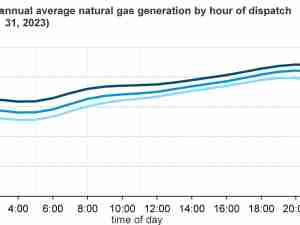Mexico Will Hedge Oil Export Prices for Next Year, Rubio Says
By: Nacha Cattan | Mar 25 2017 at 03:27 PM
Mexico plans “without a doubt” to protect the country against low crude prices for next year, Deputy Finance Minister Vanessa Rubio said in an interview, in a continuation of what’s become the world’s largest commodities hedging program.
The amount of Mexico’s export basket to be protected through market operations, versus through its stabilization fund, has yet to be determined, Rubio said in an interview on the sidelines of a banking conference in Acapulco. All options are open to reduce volatility of the peso, which is undervalued when economic fundamentals are taken into account, Rubio added.
Mexico, the world’s 11th-largest oil producer, spent $1 billion last year to buy put options that lock in an average price for its exports this year, and set aside close to $1 billion more from its budget stabilization fund to effectively guarantee oil revenue of $42 a barrel. West Texas Intermediate crude for May delivery closed Friday at $47.97 a barrel.
Mexico has also used various methods to bolster its peso after it plunged last year and early this year to record lows, including interest rate hikes and a currency hedging program totaling as much as $20 billion.
“We don’t rule out any mechanism,” to combat peso volatility, Rubio said. “It’s a question of deciding what, how and how much. That’s what we have been doing. Let’s say there could be 10 mechanisms. The point is that you’re not going to use them from one day to the next. It’s about watching how the markets are behaving and depending on what’s needed, being able to use them.”
Nothing is off the table, Rubio said, including tools to stabilize the peso-dollar exchange rate that U.S. Commerce Secretary Wilbur Ross said should be considered in trade talks. Ross said earlier this month that mechanisms used by the U.S. Treasury and the Federal Reserve in the 1994-95 Tequila Crisis could be one example of such tools, though Rubio said those measures aren’t being discussed.
The Finance Ministry has set a goal of achieving a primary budget surplus this year even without the help of a central bank transfer due in about a month, Rubio said. In April 2016 the ministry said it would pay down debt and boost its rainy-day fund using $13.6 billion from surplus funds the central bank received from exchange rate gains on its international reserves.
“We will reach our fiscal goal, and on top of that we’ll have the surplus. It won’t be that because of the surplus we’ll reach our fiscal goals.”









